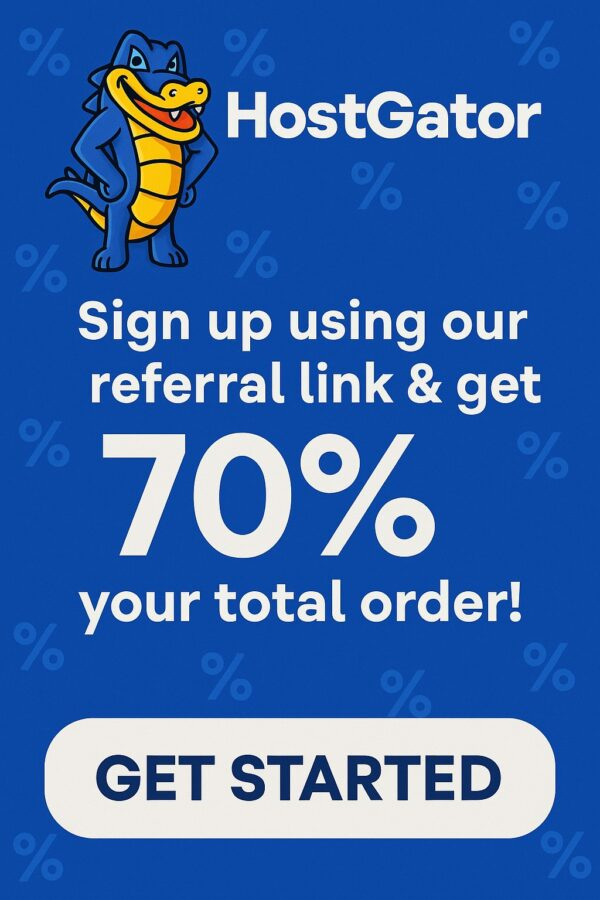Views: 0
There is a quiet revolution inside the agency back room. Not a flashy rebrand or a new social platform. A reshuffling of how the work gets done. Triage calls that used to eat Mondays. Briefs that grew like kudzu. Monthly reports that arrived one week late and three revisions deep. Now imagine those chores handled by tireless digital staffers that never lose a note, never forget a metric, and never skip a deadline. That is the promise of Agents For Agencies: Intake, Briefs, And Client Reporting.
This playbook is not theory dressed as strategy. It is a field guide for building a small roster of AI agents that sit inside your existing stack and behave like dependable junior teammates. Their jobs are simple. Pull order from the noise at intake. Turn business goals into tight creative briefs. Tell clear stories with data in client reports. The payoff is unglamorous and delicious. Fewer bottlenecks. Faster approvals. Cleaner handoffs. More time for ideas that move the needle.
You will get a blueprint you can implement in phases. You will see prompts, flows, and governance rules that hold up under real deadlines. You will also see where the hype ends, because every shiny tool needs rails. Along the way, we will ground the claims with credible industry references on intake design, brief quality, and reporting craft, plus the current state of agent adoption in marketing. (Workamajig)
Why agents now, and why agencies
Agencies swim in switching costs. Every client brings a new stew of docs, targets, and platforms. Intake is the first point of failure. Briefs are the second. Reporting is the monthly test. Agents reduce the time between intent and output by doing three things well.
- They structure ambiguity. They turn free text into fields. They standardize intents, offers, and constraints so teams compare apples to apples during scoping. Guides from the agency operations world show that a tight intake sequence reduces downstream churn and accelerates approvals. (Workamajig)
- They compress production cycles. Good briefs encode objectives, audiences, and metrics in ways that copywriters, designers, and media buyers can act on. Research from Google’s marketing insights library emphasizes briefs that define objective, success metrics, and audience at the start, because the downstream creative becomes both faster and easier to optimize. (Google Business)
- They make results legible. Data storytelling resources for agencies show that reports land when they explain what happened, why it happened, and what to do next. Narratives beat dashboards in isolation. (Adverity)
Adoption momentum is not imaginary. Surveys from 2024 and 2025 show rapid uptake of generative systems across marketing functions, with many firms running pilots that look a lot like practical agents. (McKinsey & Company)
Affiliate Link
See our Affiliate Disclosure page for more details on what affiliate links do for our website.

The agent roster you actually need
You do not need an army. Start with three roles that map directly to the bottlenecks in Agents For Agencies: Intake, Briefs, And Client Reporting.
1) The Intake Agent
Mission: Convert messy inbound requests into structured, scorable opportunities. Route them to the right human with context and a suggested next action.
Inputs: Form submissions, email threads, calendar notes, discovery call transcripts.
Outputs: A clean intake record with business goal, target audience, offers, channels, budget range, timing, assets on hand, legal constraints, and data access. A probability-to-win estimate and a list of gaps.
Must-have behaviors:
- Extract entities from free text and map to your CRM fields with confidence scores.
- Ask missing questions using plain language and short checklists.
- Flag risk, such as no clear KPI or no analytics access.
- Hand the human a two-minute brief to prep for the first call.
Operations sources show that standardized intake improves conversion and project margins because fewer surprises surface midstream. Keep the five-step intake pattern in mind: receive, qualify, discover, propose, onboard. (Workamajig)
2) The Brief Agent
Mission: Turn approved scope into a one-page creative or media brief that every contributor can understand on first read.
Inputs: Intake record, discovery call transcript, links to prior campaigns, brand book, competitor references.
Outputs: Objective, audience, key insight, promise, proof, tone, deliverables, constraints, success measures, and timeline. For media, the agent also outputs channels, targeting assumptions, measurement plan, and spend guardrails.
Creative references highlight brief elements that correlate with better work: clear objective, audience clarity, outcome definition, deadlines, and budget. Build your template around those pillars and train the agent to keep it “brief.” (Google Business)
3) The Reporting Agent
Mission: Pull cross-channel metrics, compare to targets, write a short narrative, and propose next steps. Produce a client-ready deck or doc with one page per channel and a compact executive summary.
Inputs: Connector feeds, ad platform exports, analytics goals, CRM revenue events.
Outputs: Time-series charts, channel-level tables, benchmark comparisons, insights, and a three-bullet recommendation section. Reporting products for agencies consistently advise that every report should end with specific actions, not just numbers. (AgencyAnalytics)
Bonus agent: A lightweight Asset Librarian Agent that tags creative files and usage rights so the Brief Agent never stalls while hunting. This frequently pays for itself in saved search time. Industry commentary notes how much time marketers lose simply finding information. (Lyzr)
Architecture in plain English
You can wire all three agents without ripping out your stack. Think of four layers.
- Data layer: CRM, project tool, ad platforms, analytics, and a simple document store.
- Orchestration layer: The workflow tool that triggers agents as events happen.
- Model layer: Foundation models with retrieval for your brand and client context.
- Guardrail layer: Policies, human approvals, and logging.
You can run this inside the systems you already know. For example, mainstream CRM suites have shipped agent features for knowledge, content, and prospecting that you can extend with your own prompts and data. That trajectory is public and points to agentic patterns inside marketing stacks. (Lifewire)
The point is not to chase novelty. The point is to give each agent the few documents and fields it needs, then wrap it with a trigger, a checklist, and a human signoff.
Affiliate Link
See our Affiliate Disclosure page for more details on what affiliate links do for our website.

Intake, the right way
What “good” looks like
A strong intake sequence does four quiet but vital things.
- Removes ambiguity early. The form uses exact words for budget ranges, timeframes, and primary KPI.
- Collects assets once. The agent asks for links to brand kits and past campaigns up front.
- Scores fit with evidence. It weighs budget, timeline, data access, and internal bandwidth before anyone says yes.
- Preps the human. It writes a two-minute pre-call brief and a five-question discovery script that respects the client’s time.
Agency ops guides urge teams to codify intake so prospects become profitable clients faster. This is where to borrow. Keep steps visible. Keep approvals explicit. (Workamajig)
The intake prompt the agent uses
Prompt: You are the Intake Agent for a marketing agency. From the text below, extract: business goal, audience, offer, channels, budget range, timeline, current assets, data access, legal constraints, decision makers, and success KPI. Identify missing info as yes-or-no questions. Produce a one-paragraph summary and a qualification score from 0 to 100 with a one-sentence rationale. Text begins: “[paste email or form]”.
Discovery helpers
Have the agent output five discovery questions based on gaps. For example, if the KPI is awareness but the client asks for lead targets, the agent should flag the mismatch and suggest a conversation. The human still decides. The agent does the prep work.
Briefs that unlock good work
The one-page standard
A brief should fit on one page and survive a screenshot. The reader should get what to build, who it is for, why it matters, and how success will be measured. Insights libraries remind us that the best briefs define objective, success metric, and audience with care. They include deadlines and budgets because projects live in time and money. (Google Business)
The brief prompt
Prompt: You are the Brief Agent. Create a one-page brief using this structure: Objective, Audience, Insight, Promise, Proof, Tone, Deliverables, Constraints, Success Metrics, Timing. Use the client’s language. Keep sentences tight. Include a single key visual or copy direction as one sentence. Source material: “[paste intake + notes]”.
Guardrails for quality
- Require the agent to cite where each line came from.
- Require it to pose two risks and two open questions.
- Require a human to approve the brief before production.
Practitioners who write about creative briefs point out a simple truth. Garbage in, garbage out. The agent is a helpful broom. It cannot be the judge of taste. (Medium)
Client reporting that actually gets read
The narrative rule
Numbers are necessary. Story earns action. Data storytelling resources for agencies argue for reports that move from observation to interpretation to recommendation. Build a fixed skeleton so every report answers the same three audience questions. What happened. Why it happened. What to do next. (Adverity)
The reporting prompt
Prompt: You are the Reporting Agent. Using the connected data for the last 30 days, create a five-section client report: Executive Summary, Channel Performance, Creative Insights, Budget vs Plan, Recommendations. For each section write 3 to 5 sentences in plain English. End with three specific next steps. Compare to targets and prior period.
The cadence and close
Reporting tools for agencies advise ending with two or three recommendations. State them in plain language. If possible include cost and expected impact. Train the agent to always include a close that requests approval or feedback. Do not bury the ask. (AgencyAnalytics)
Affiliate Link
See our Affiliate Disclosure page for more details on what affiliate links do for our website.
A 30–60–90 rollout plan
Days 1 to 30: Intake pilot
- Map your current intake fields to a single schema.
- Build the Intake Agent inside your forms and CRM so it writes to one place.
- Add a qualification score and a confidence score.
- Test on two live prospects and one internal “fake client.”
- Measure time to first response, data completeness, and sales-team satisfaction.
Days 31 to 60: Briefs pilot
- Feed signed scopes and discovery notes to the Brief Agent.
- Lock the one-page template.
- Require two human signoffs.
- Add a checklist for legal or regulated industries.
- Measure revision count and cycle time from scope to approved brief.
Days 61 to 90: Reporting pilot
- Connect the top three channels and your analytics goals.
- Decide the one-page executive summary layout.
- Train the agent to draft, not send.
- Compare to last month’s manual report time and client satisfaction.
The numbers will not be uniform, but industry examples show that structured use of AI can deliver visible efficiency. Some marketing teams even report measurable cost savings when they deploy generative tools for creative production and routine tasks. Treat those headlines as directional, not a promise, but they illustrate the magnitude possible when teams commit. (Reuters)
Governance that earns trust
Agents for agencies need rules that protect the work and the relationship.
Data access: Restrict the Brief Agent to brand-approved files and the Reporting Agent to read-only connectors.
Attribution: Log which source informed each field in a brief or each claim in a report.
Human in the loop: Intake approvals by sales or accounts. Brief approvals by strategy and creative. Reporting approvals by accounts and channel owners.
Security and retention: Encrypt at rest. Rotate keys. Archive drafts for six months. Delete client data on termination per contract.
Bias and accuracy: Use checklists. Enforce named reviewers for regulated claims. That is how you avoid drift and keep the machines from getting sloppy.
Prompts you can paste
Use these as building blocks and change the nouns to fit your stack.
Prompt: From the intake text below, rewrite the client’s goal as a measurable KPI with a timeframe. Suggest one target and one stretch target. Indicate which data source will confirm success. Text starts here: “[paste]”.
Prompt: Draft five discovery questions tailored to these gaps: “[paste missing fields].” Keep each to one sentence. No yes-or-no questions.
Prompt: Turn this approved scope into a one-page brief with Objective, Audience, Insight, Promise, Proof, Tone, Deliverables, Constraints, Success Metrics, and Timing. Keep to 250 words. Use the client’s vocabulary.
Prompt: Write the executive summary for a monthly report in four sentences. First sentence states overall performance vs target. Second explains the main driver. Third flags a risk. Fourth asks for approval on three actions.
Prompt: Explain the biggest variance vs plan in plain English for a nontechnical client. Keep to three sentences and include a recommendation.
Affiliate Link
See our Affiliate Disclosure page for more details on what affiliate links do for our website.
](https://altpenguin.com/wp-content/uploads/2025/08/veed-ad.webp)
Metrics that matter
Choose a few numbers that prove these agents help. Keep the list short and relevant to Agents For Agencies: Intake, Briefs, And Client Reporting.
For intake:
- Time from form submit to qualified response
- Percent of records with KPI and budget captured
- Win rate after discovery call
For briefs:
- Cycles to approval
- Average brief length and readability
- Creative team satisfaction score
For reporting:
- Hours saved per report
- Percent of reports with three recommendations
- Client satisfaction and renewal
Benchmarks will vary. Industry surveys show adoption is rising and value is emerging across sales and marketing functions, but every firm sits at a different place on the curve. Track your own baselines and improvements. (McKinsey & Company)
Playbooks for edge cases
Regulated industries
Have the Brief Agent include a compliance section populated with disclosures and claims that require substantiation. Require legal signoff. Force the Reporting Agent to use approved language for risk and performance caveats. Keep a single source of truth for allowed claims.
Multi-brand portfolios
Give each brand a namespace. The Intake Agent assigns the record to a brand on day zero. The Brief and Reporting Agents only see documents tagged to that brand. Keep model memory by brand so voice stays consistent.
Enterprise procurement
Agents can help with RFPs by extracting requirements and asking clarifying questions. Keep a human proposal lead. Use the Intake Agent to score fit before you invest.
Tooling notes without vendor worship
You can do the job with a modern CRM, a workflow engine, and document storage. Many suites are layering in agent-like features for knowledge, content, and prospecting that can be shaped to your process. That is useful if you favor fewer moving parts. (Lifewire)
On the reporting side, look for tools that encourage narrative on top of charts, because the narrative is what persuades. Vendor guides that focus on data storytelling are a good sniff test. If a platform helps you explain change and recommend action, not just visualize, you are in the right neighborhood. (Adverity)
On intake and briefs, learn from operations platforms that have documented intake steps and creative brief templates. You do not need to buy those platforms to borrow their patterns. (Workamajig)
Affiliate Link
See our Affiliate Disclosure page for more details on what affiliate links do for our website.
A short case-style scenario
A regional services brand arrives with a classic tangle. Three product lines. Six audiences. Patchy analytics. The Intake Agent structures the ask and spots a mismatch between a lead target and an awareness plan. The discovery call gets a tighter agenda. The Brief Agent writes a one-pager the same day. Creative begins without hunting for fonts or tone of voice. The Reporting Agent pulls the first 30 days and explains why organic search lagged and how paid search filled the gap. The executive summary asks for a landing page tweak, a geo budget shift, and a test of a new visual. The client approves in-thread. The team moves. The work feels lighter because the friction is gone.
That is the texture of improvement you can expect from Agents For Agencies: Intake, Briefs, And Client Reporting. The tech changes, but the wins come from structure, clarity, and speed.
Risks, with mitigation
Hallucination and overreach: Keep agents grounded in your documents and fields. Require source attributions inside drafts. Require humans to approve anything client-facing.
Privacy leaks: Segregate data by client. Keep logs. Use least-privilege access.
Process drift: Run monthly reviews of prompts and templates. When the work changes, the agents must change.
False efficiency: Faster is not always better. Measure quality with satisfaction scores and outcomes, not just speed.
Industry reporting has begun to quantify savings for firms that deploy generative systems, but remember that your governance is the multiplier. You will not bank the benefits without discipline. (Reuters)
Making the business case
Executives do not buy potential. They buy numbers and risk control. Anchor the business case in boring but durable math.
- Intake hours saved per month multiplied by your fully loaded cost.
- Brief revision cycles reduced multiplied by average hourly burn.
- Reporting time saved per client multiplied by your monthly roster.
Add soft gains where sensible. Faster approvals. Fewer scope slips. Clearer accountability. The wider market shows marketing organizations capturing new value from generative tools, with pilots expanding into agentic programs. Use that context to frame your own forecast. (McKinsey & Company)
Your first internal workshop
Book a half day. Invite accounts, strategy, creative, media, and data.
- Walk the work. Whiteboard intake to invoice for one client. Circle the moments with preventable drag.
- Name the artifacts. Define the exact fields your Intake Agent must extract. Finalize the one-page brief. Freeze the executive summary layout.
- Write the prompts. Use the templates above and force them through real examples.
- Decide the guardrails. Who approves what. What gets logged. What gets deleted.
- Pick the pilots. One live prospect, one mid-sized retainer, one simple ecom account.
- Assign owners. Every agent needs a human steward. No orphaned automations.
By the end of the session you will know what to build over 90 days. You will also have a shared language for how the agents help without taking over.
Final word
Agents are not the future of agencies. They are the present tense of operational sanity. Intake becomes disciplined instead of chaotic. Briefs stay crisp instead of bloated. Reporting tells a story instead of dumping charts. That is the working definition of Agents For Agencies: Intake, Briefs, And Client Reporting.
You can design this system in a quarter and refine it for years. The tech will evolve. Your processes will evolve. The north star does not change. Fewer handoffs drop. Clearer briefs get written. Reports that drive action land on time. Your people do higher work, because the low work got handled.




